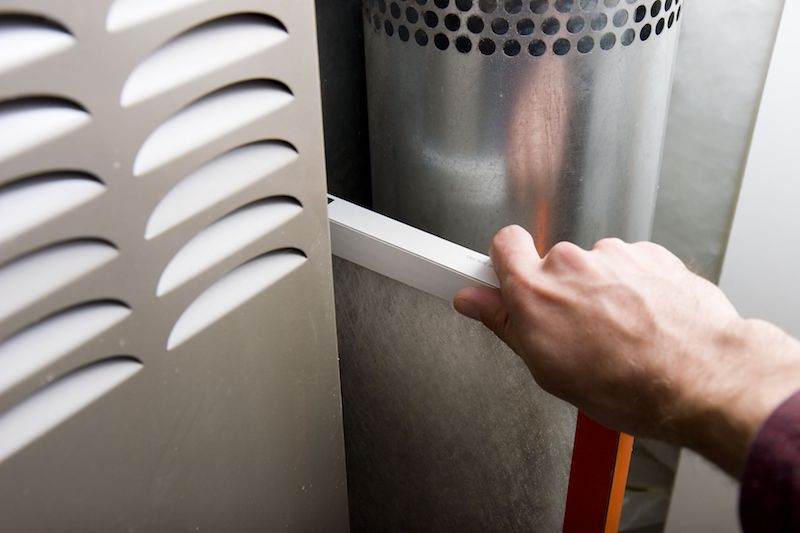
If you’re uncertain whether your Odessa home has poor indoor air quality (IAQ), it likely does.
We are indoors a lot. In fact, we’re inside up to 90% of the time, according to the U.S. Environmental Protection Agency. And the air inside homes could be 2–5 times worse than outdoors, which might create long-term health problems.
Most Common Sources of Unsatisfactory IAQ
We’ve made a list of the most ordinary sources of inferior IAQ, the troubles they cause and how you can take care of these indoor air pollutants. If you’re concerned about the air inside your home, we recommend chatting with a expert like Redhawk Heating & Air Conditioning about which products are best for your home.
Volatile Organic Compounds
Volatile organic compounds, or VOCs, are chemicals released by common household products.
They’re found in paint and stains in addition to:
- Furniture
- Carpet
- Building materials
- Cleaning products
- Cosmetics
- Air fresheners
- Candles
When these fumes accumulate inside, they might irritate your eyes, nose and throat. They might also result in headaches and nausea. Regardless of whether your house is in a rural or industrial space, an EPA study found indoor levels of these fumes can be 2–5 times higher than the air outside your home.
Always follow the manufacturer’s guidelines when using paint or cleaning supplies. Opening a window can help odors disperse faster.
Air purification systems can also help. This equipment partners with your heating and cooling system to clean indoor air. When seeking a system, ensure it’s specifically made to eradicate VOCs.
Dust and Pet Dander
Dust and pet dander can irritate health problems like asthma and allergies, especially when it continually gets redistributed by your house’s comfort unit. While you can vacuum more routinely and get an improved air filter, an air filtration system might be a better solution.
This unit hooks to your HVAC equipment to provide strong filtration. Some models provide hospital-level filtration for eliminating particles and bioaerosols.
Persistent Odors
Modern residences are closely sealed to boost energy efficiency. While this is good for your utility bill, it’s not very good for your IAQ.
Stale odors can hang around for a greater amount of time since your residence is pulling in less fresh air. As keeping your windows open all year-round isn’t doable, here are two approaches you can make your indoor air smell cleaner.
An air purification system is put in your ductwork to eliminate odors before they recirculate. Find one with a carbon filter and the capability to wipe out damaging VOCs. These units can also help keep your household healthy by wiping out most bacteria and common allergy triggers like pollen and mold spores.
A ventilation system removes stuffy indoor air and substitutes it with crisp outdoor air. There are two kinds of systems (heat recovery and energy recovery), so call our professionals for more details on which solution is ideal for your home.
Uneven Humidity
It’s critical your residence’s humidity stays even. Air that’s too humid can lead to mold, while dry air can lead to respiratory issues.
Our techs suggest 40–50% for ideal comfort. To keep yours steady, think over getting a whole-home humidifier or whole-home dehumidifier with your HVAC unit.
In place of having to lug a humidifier from room to room, this solution delivers even humidity across your house.
Carbon Monoxide
Carbon monoxide is colorless gas you can’t smell. It’s caused by insufficient combustion in fuel-burning units, like gas heating systems, water heaters or fireplaces.
It produces a serious health risk. In small levels, it can cause flu-like ailments like headaches and nausea. It could be lethal in heavy concentrations.
We recommend annual furnace maintenance to double-check your system is running smoothly. This service allows our technicians to find problems before they get bigger, including malfunctions that can cause carbon monoxide leaks.
The best method to keep your house free of carbon monoxide is to put in detectors. These alarms need to be on every floor close to bedrooms and living areas.
Improve Your Residence’s Air Quality with the Redhawk Heating & Air Conditioning Pros
Informed that your house has bad air quality but not sure how to make it better? Or unsure which option is right for you? Give our approachable HVAC specialists a call at 432-237-0168 or contact us online now. With free estimates and pro service, we’ll help you locate the right option for your needs and budget.

